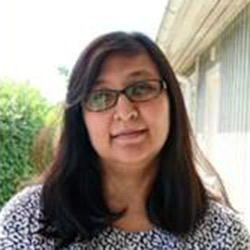Managing Diversity within IT-Project Team

Bhawna Acharya
Master of Engineering graduated in 2016
bhavna.acharya [at] gmail.com (bhavna[dot]acharya[at]gmail[dot]com)
My thesis (1) investigated managing diversity in a workplace through a development project carried out for a consulting company. As the employees of the company represented many different nationalities and different cultures, handling cultural diversity and delivering the agreed work at the same time for the clients were seen quite challenging. Delays in the delivery had resulted in increased project cost and made project estimates and budgeting challenging. This was also a business challenge as it was affecting company reputation.
In the case company, the teams in the projects were not permanent, but were formed when a project started and dissolved when the project ended. Many companies calculate incorrectly the time it takes for a diverse team to cooperate synergistically. Whenever a team is formed, it creates its own culture. Team members should get to know each other and trust each other before setting standards for performance and developing the rules for acceptable and unacceptable behavior (see e.g. 2, 3, 4).
Key initiatives to effective diversity management
In my thesis, I identified four key initiatives, which are important in diversity management. They are described below.
Set up a system: If a company decides to implement diverse teams then it must be not only in words, but it must be accompanied with real actions such as guidelines, training, regular communications as well as support for diverse workforce in the company (see e.g. 5). My thesis findings were applied in many ways in the company. Firstly, my company provided some training to the consultants regarding diversity. Although these training sessions were not compulsory, they were useful and many team members attended the training. Daily check-up calls were used to track the progress in the project, which, in this case, involved one team in India Delivery Center (IDC) and one in an on-shore team. This was a good way to keep the communication channels open. The project manager and key team members visited India and India team members visited on-shore, which resulted in better communication. Also some video sessions for the team were arranged to help the offshore team understand the domain and architecture (see e.g. 6).
Define Guidelines: Guidelines were built in the beginning of the project, and refined latter, and everyone was aware of the guidelines. These guidelines explained in detail why the guideline is needed and how it should be met. If there was any confusion regarding guidelines, it was clarified in meetings.
Be Realistic: For the teams in different locations it is important to agree on the standards, guidelines and common tools to avoid confusion and misunderstanding. As the subject matter expert usually is in on-shore location, having regular sessions to share knowledge and mentoring was beneficial. In addition, the offshore team needs to put in some effort to self-facilitation. The teams were open to discussion to resolve conflicts and regular meetings helped in sorting out issues.
Build Trust: To gain trust in the team it is important that everyone is aware of and they acknowledge each other’s expertise. By building trust we were able to understand the cultural counterpart better. Avoiding stereotypes also helped in building trust. We designed team activities, which involved teams in both locations. New ways or methods to do the tasks were experimented with to see which are most suitable for the team.
Outcome
I would say that the team’s productivity increased by sharing and integrating knowledge. However, the advantages of diversity in the workplace do not come without challenges. I learnt how to manage a diverse team and how to increase team performance, and I was also able to enhance project timelines by leveraging a diverse talent pool in two of my projects.
The journey continues
Well managed diversity yields many benefits to the company and society. Managing diversity should be included in the daily work and overall strategies of organizations. Besides having leadership support, I found that these initiatives should include support from employees of all levels in an organization. Diversity in the team created a better environment for everyone with more flexibility, innovation and dynamics. This also put demands on each team member to understand and adapt to the team needs.
After completing my thesis, I am now more open to working with diverse teams than I was before this development project. The project has increased my creativity and innovation capability. I have realized that diverse teams are more productive, more creative, and more innovative than teams consisting of team mates with similar demographics.
I am no longer working for the consulting company for which I conducted my thesis, but my experience in working in a multisite team has helped me understand the value of diverse teams. I am currently in a more challenging role and in a better position in another organization. I also feel that I am a better person due to this development task. Studying and completing my thesis has therefore helped me in many ways!
References:
- Acharya B. 2015. Managing diversity in workforce: IT projects. Metropolia University of Applied Sciences. Master’s Degree Programme in Business Informatics. Helsinki.
- Hofstede, G. 2011. Dimensionalizing Cultures: The Hofstede Model in Context. Online Readings in Psychology and Culture 2 (1).
- Tuckman, B. W. & Jensen, M. A. C. 2010. Stages of Small-Group Development Revisited 1. Group Facilitation 10 (2010). 43–48.
- Edison, T. 2008. The Team Development Life Cycle. (Cover story.) Defense AT&L 37 (3).
- Hofstede, G. H. & Hofstede, G.-J. & Minkov, M. 2005. Cultures and Organizations: Software for the Mind. 3rd ed. New York: McGraw Hill.
- Nunamaker, J. F. & Reinig, B. A. & Briggs, R. O. 2009. Principles for effective virtual teamwork. Communications of the ACM 52 (4).
Diversity in teams – risk or opportunity in organizations

James Collins
PhD
Senior lecturer at Metropolia University of Applied Sciences
james.collins [at] metropolia.fi (james[dot]collins[at]metropolia[dot]fi)
Introduction - Teams in global contexts
It is often said that globalization and technology has brought the world closer together. Indeed, Michael Greig (1) has described ‘the end of geography’, and Manuel Castells (2) reflecting on an interconnected world of spaces and places through the development of information technology, describes this connectedness as the ‘space of flows’.
For business, this element of globalization has meant new approaches to work, and within these contemporary approaches, new arrangements, such as globally interconnected virtual teams – even to the extent that some never meet in a common environment – are a common feature of workplace practice. By nature, global virtual teams consist of members from diverse cultures, and this poses a challenge for team success. Globalization has also brought about fluidity of the workforce; employees from multiple cultures working together at a physical site of an organization, and here we see intercultural work teams of the more traditional type.
It is in the above context that Bhawna Acharya’s thesis (3) considers diversity in intercultural teamwork within a real company setting. Clearly, this is a topic that is not only important to the case organization but has considerable transferability to similar types of organizations that have analogous workplace arrangement.
Teamwork - Creative disruptors
An interesting additional focus within Bhawna’s thesis is that of including within work teams people who are simply ‘different’. These are people who not only have diverse skill sets and competencies, but who also act and think in ways that are different from the organizational norm. They have cognitive and behavioural diversity, and their approach may be somewhat at odds to the values and norms that are represented in the organizational culture within which they work.
As Bhawna attests in her work, people who think and act in different ways – frequently described by business leaders such as Steve Jobs and by academics, for example Umair Huq (4), as ‘misfits’ – are the creative disruptors of the status quo who foster new ideas and innovation. Organizations frequently look to employ people who ‘fit’ on two dimensions; first, job/role–fit, which represents the skills and competencies for the job at hand, and second, person–organization fit, reflecting that the person will fit the organization’s culture and values. Intuitively, one can perceive the sense in achieving fit around both perspectives, and indeed organizations invest considerable resources in recruiting to ensure fit. But research provides evidence that for organizations to avoid the pitfalls of organizational inertia, and to engage in the necessary disruption that brings about creativity and innovation, managers may need to embrace the discomfort that comes with encouraging ‘difference’ (5).
Bhawana’s research provides a platform for the managers within the organization that she carried out her work to understand and act on team diversity by providing evidence-based advice of the actions that make intercultural teams to be at their most effective.
Applied research - Evidence-based and contextual relevance
Existing knowledge (theory, literature, best practice) around the focus themes of Bhawna’s thesis is voluminous. This means that generic advice to managers about good intercultural teams, be they virtual teams or of the traditional form, is bountiful. However, in this thesis work, as should be the case in every good organizational development project, the research design pays particular attention to context. As an applied research project, it is the particular issues that are relevant to the organization at hand that are central to creating an evidence-based ‘solution’ for the particular organization.
Of course, following the generic management advice is better than solutions that are based on the latest management fads, or a manager’s gut instinct (which sadly reflects much of managerial action, see e.g. 6), but the crucial aspect in Bhawana’s work is that her solution to the organization’s challenges are precisely grounded in the real needs of the firm.
Thesis work as personal growth
Having said that Bhawna’s thesis is focused on a particular organizational context, it is interesting to note that she has since moved from the case organization but has still found great value in her thesis work in her new firm. Perhaps two issues come to mind. The first is that the study for the case firm likely has some transferability to the new context.
But the second important point is that her thesis work is a personal development journey in which she, the student, acquires vital skills on how to implement any good practices (such as a change management issue) in organizational contexts. We should not forget personal development is at least equally as important as learning new course-based knowledge, and in certain situations can be a more important outcome.
References:
- Greig, J. M. 2002. The end of geography? Globalization, communications, and culture in the international system. The Journal of Conflict Resolution 46 (2). 225–243.
- Castells, M. 1996. The rise of the network society. Oxford: Blackwell.
- Acharya B. 2015. Managing diversity in workforce: IT projects. Metropolia University of Applied Sciences. Master’s Degree Programme in Business Informatics. Helsinki.
- Huq, U. 2011. What kind of misfit are you? Harvard Business Review, August.
- Meyerson, D. E. & Scully, M. A. 1995. Tempered radicalism and the politics of ambivalence and change. Organization Science 6 (5). 585–600.
- Pfeffer, J. & Sutton, R. I. 2006. Evidence-based management, Harvard Business Review, January. 63–74.
Master's Programme in Business Informatics
Studying in the Master's Degree Programme in Business Informatics will deepen your business skills as well as strategic and managerial expertise. While getting familiar with different business models and operations you will learn how to interpret data to craft the answers to critical business questions. Your analytical and decision-making skills will be enhanced as you become an expert in understanding how to use and analyze data and apply business development methods.
Metropolia Master´s - Keskusteluja työelämän kehittämisestä
© Metropolia Ammattikorkeakoulu 2018
Metropolia Master´s - Discussions on the Development of Work Life
© Metropolia University of Applied Sciences 2018
Julkaisija (Publisher): Metropolia Ammattikorkeakoulu, Helsinki
Toimittanut (Ed.): Marjatta Kelo & Elina Ala-Nikkola
ISBN 978-952-328-130-1
Julkaisu saatavilla pdf-muotoisena täällä
